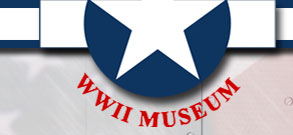Model Designation
The Ercoupe was designed between 1936 and 1940, with the first flight of the prototype in 1937. Before WW2, 112 were built and approximately 5,000 were made immediately after the war.
The original name was derived from the name of the company, ERCO, which stood for Engineering and Research Corporation.
Designed by Fred Weick and a small team, the Ercoupe was the first plane to incorporate much of the original research that Weick performed as the assistant chief of the NACA aerodynamics division. These new features include the inability to be held in a spin, the tricycle landing gear to improve landing and take-off safety, the wholly cowled engine, and a control system in which the rudders are linked to the ailerons to simplify controlling the airplane.
Military
ERCO XPQ-13; serial number 41-25196
| Model 415-C Military Service |
|
|
|
|
|
|
|
|
|
| |
|
|
|
|
|
|
|
|
| |
Construction Number
|
Construction Date |
Civilian Registration |
Purchase Date |
Army Air Force Designation |
Army Air Force Seral Number |
Service Date |
|
|
|
|
|
|
|
|
|
|
|
|
|
|
|
|
|
|
|
|
|
|
|
|
|
|
|
|
| |
11 |
December 4, 1940 |
NC28655 |
January 4, 1941 |
YO-55 |
41-18875 |
February 26, 1941 |
|
|
|
|
|
|
|
|
|
|
|
|
|
|
|
|
|
|
|
|
|
|
|
|
|
|
|
|
| |
110 |
|
NC37143 |
August 19, 1941 |
XPQ-13 |
41-25196 |
December 8, 1941 |
|
|
|
|
|
|
|
|
|
|
|
|
|
|
|
|
|
|
|
|
|
|
|
|
|
|
|
|
| |
XXX |
Unknown |
Unknown |
Unknown |
XPQ-13 |
41-39099 |
Unknown |
|
| |
|
|
|
|
|
|
|
|
In 1941, the U.S. Army Air Force purchased two examples of the ERCO Ercoupe 415-C and converted them to radio-controlled drones with the designation XPQ-13. The PQ-13 was not produced in quantity, because the Culver PQ-14 was the superior design for that purpose. The U.S. Army Air Force also acquired s/n 11 and designated this airplane as YO-55 which performed the first rocket assisted take off.
The first successful U.S. rocket-assisted takeoff was accomplished in an Ercoupe at March Field in Riverside, California by Captain Homer A. Boushey Jr. AAF (later to become Brigadier General), with pressed-powder propellant JATO rockets developed by Cal Tech.
Postwas Sales
Although World War II had interrupted production of the Ercoupe, general aviation manufacturers were enthusiastic about the prospects of a postwar aviation boom. Thousands of men and women were trained as pilots by the government, and the hope was that they would want to include flying in their civilian life. Production of the model 415-C resumed in 1946, and in that year alone, 4,311 aircraft were produced and sold at a cost of $2,665. This was the same price as in 1941. At its peak, ERCO was turning out 34 Ercoupes per day, operating three shifts per day. The aircraft was aggressively marketed through non-conventional outlets such as the men's department of the Macy's department store chain. However, private aircraft sales slumped after the war and the bottom dropped out of the civil aircraft market in late 1946, ending prospects for a boom market for civil aircraft sales.






